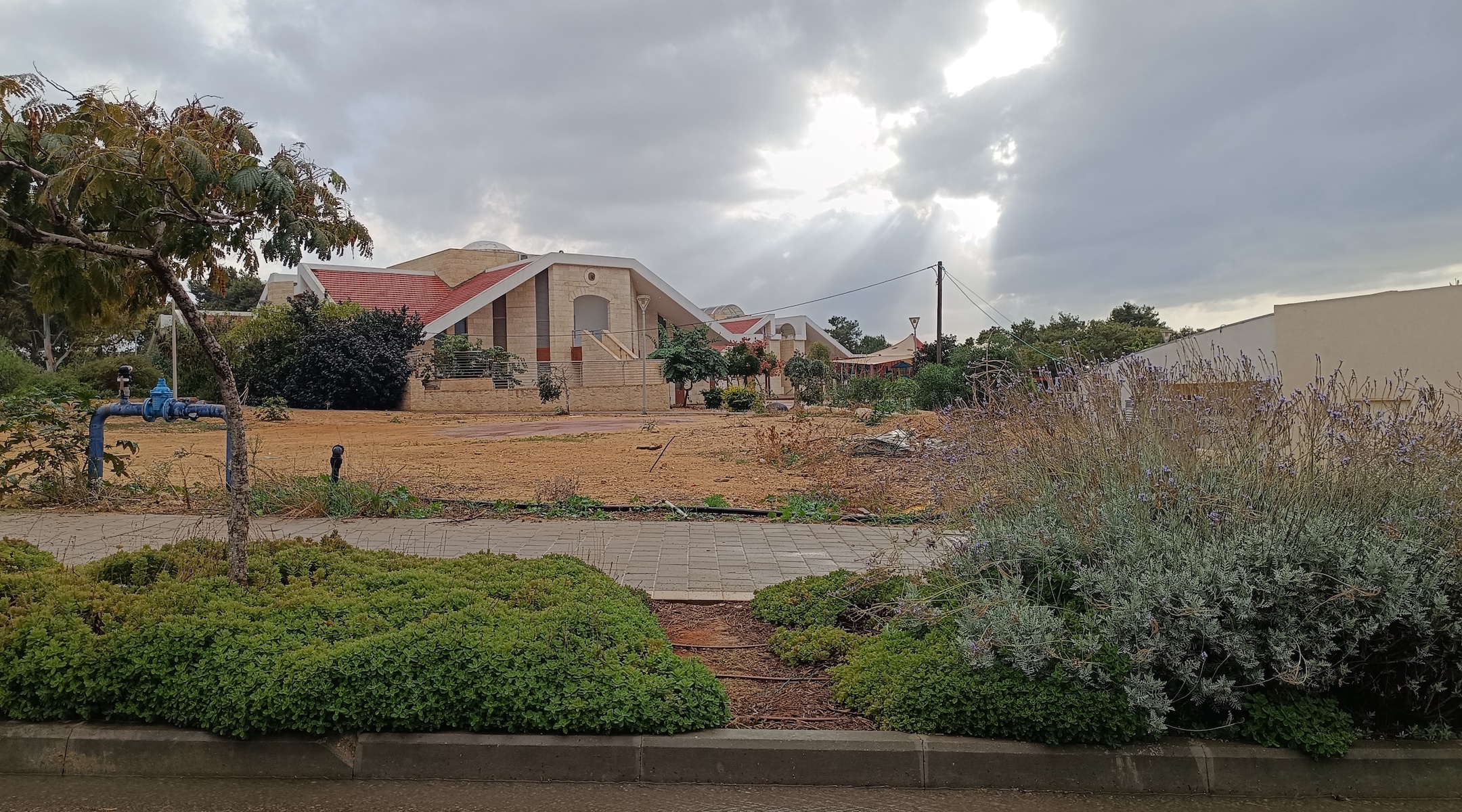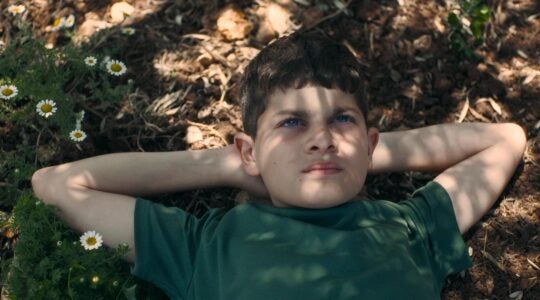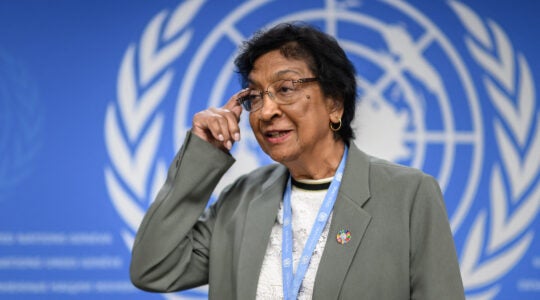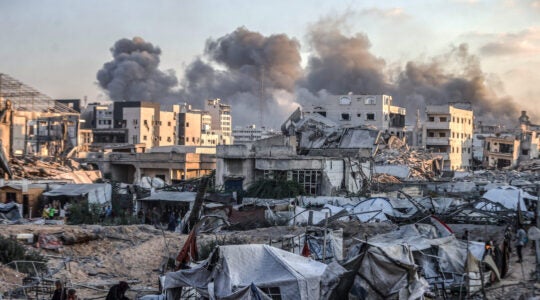NITZAN B, Israel (JTA) — Since Oct. 7, Benjamin Netanyahu has largely avoided face-to-face meetings with ordinary Israeli citizens. One exception occurred in mid-November, when the Israeli prime minister met with a group of Israelis evacuated from the Gaza border, including former Gaza Strip settlers who presented him with a request: to return to their uprooted homes once Israel’s war with Hamas was over.
“The Gaza Strip won’t let us rest, the land of Israel won’t let us rest until the people of Israel return to settle it, and only then will it flourish” one of the participants, Zehorit Cohen, told Netanyahu in a video clip that has since circulated online. Cohen is a former resident of the Gaza bloc of settlements, known as Gush Katif.
“It has nothing to do with strategy or security or economics or anything,” she said. “We need to go back there because it’s the land of Israel, and the land of Israel calls to us.”
Israel evacuated 8,000 settlers and all of its troops from Gaza in 2005, a withdrawal that split Israeli society and that, for the uprooted settlers, still festers as an open wound. Now, as the Israeli military reconquers broad swaths of the coastal territory in its campaign to destroy Hamas, former Gush Katif residents and other settler leaders are standing at the vanguard of mounting calls to rebuild the evacuated settlements.
“Today, after this thing, everyone understands that settlements equal security, and where there aren’t settlements, there’s terror, massacre and Holocaust,” Yossi Dagan, the head of the Samaria Regional Council of settlements in the northern West Bank, said in a recent interview on Israeli Channel 14, a right-wing station.
Jewish resettlement inside Gaza has no international support and is understood by even some right-wing lawmakers to be inadvisable. But Dagan, along with settler activist Daniella Weiss, is leading a coalition of right-wing groups using the current war as a springboard to intensify a push for a return to Gush Katif.
Their coalition recently held a conference that drew some 200 people and at least one lawmaker, according to Haaretz. The group has already drawn up a list of families who have committed to relocating to a future resettlement project in Gaza.
“The true victory over Hamas will be to take territory back and establish settlements,” Dagan said.
Politicians on the far right have long called for reestablishing Gush Katif, including an Israeli government minister who did so earlier this year. Now, the war has brought those demands squarely into the mainstream.
A mid-November poll of Israel’s Channel 12 News found that 44% of Israelis are in favor of resettling Gush Katif, with 39% opposed and 17% “unsure.” A Hebrew University poll in December found that enthusiasm had declined, with 33% in favor of settlement in Gaza while 55% are opposed.
In the international arena, however, and even among Israel’s right-wing leadership, the idea appears to be a non-starter. Netanyahu has denounced the 2005 withdrawal from Gaza, called the disengagement, but he voted for it as a member of Prime Minister Ariel Sharon’s government at the time. While he has said Israeli troops will remain in Gaza for the foreseeable future, he called the resettlement of Gush Katif “not a realistic objective” of the war against Hamas.
And President Joe Biden called a potential reoccupation of Gaza a “big mistake” in an October “60 Minutes” interview. In March, his administration rebuked Netanyahu’s government for repealing a portion of the 2005 disengagement law.
Former Israeli right-wing officials have also criticized the movement to return to Gush Katif. Yonatan Bashi, who was one of the leading officials overseeing the implementation of the 2005 Gaza withdrawal, said trying to settle several thousand Israelis in a territory inhabited by millions of Palestinians would be an error.
“From the beginning, the idea that we went to live in the Gaza Strip was a big mistake, not because of ideology but because there were 1.6 million Palestinians in the Gaza Strip versus 7,000 or 8,000 Jews,” Bashi told Israel National News last month, estimating 2005 population figures. “Whoever thought our problem with the strip was geographical was wrong then and is wrong now.”
Former Israeli Prime Minister Ehud Olmert, who took a lead role in advocating for the disengagement plan and later became an outspoken advocate of territorial withdrawal, said the idea that settlements in Gaza provide security is “utter nonsense.”
“Had we remained in Gush Katif, we would have been in the kishkes of Gaza, and everything would have happened years ago,” he said, using the Yiddish word for guts. Instead, he blames the Oct. 7 attacks on reports that the army diverted troops from the Gaza border to the West Bank leading up to the attack.
“If our soldiers had stayed next to the border and were not … protecting the settlers so they can attack Palestinians in the West Bank and destroy their olive groves, what happened would not have occurred,” said Olmert.
Far-right Heritage Minister Amichai Eliyahu recently told Israel’s public broadcaster, “I want to return and establish settlements in the strip, but I’m not sure now is the time to do it.”
Many former Gush Katif residents and their ideological supporters feel themselves pulled back toward Gaza by trauma from a home that was lost — one that is connected to a historical right-wing Zionist mandate to control the entire land of Israel. For years after the disengagement, many of the evacuated settlers lived in temporary housing. Some communities have reconstituted themselves elsewhere. The former Gush Katif settlers generally refer to the withdrawal as an “expulsion.”
At the Gush Katif Heritage Center in Nitzan B, a southern Israeli town established to house evacuated settlers, there is a constant mourning over what was lost and an unfading desire for a return to Gush Katif.
“Here is a memorial — not a museum for something that was and is finished, but a memorial for what continues to live in our hearts” said Shimon Samson, a 71-year old guide at the center who lived in the small Gush Katif settlement of Gadid beginning in 1980, a decade after the Gaza settlements were founded.
Samson pointed to a historical Jewish presence in the ancient city of Gaza that dates back centuries, as exemplified by a replica mosaic of King David, on display by the center’s entrance, based on an original discovered in a fifth-century Gazan synagogue in 1965, shortly before Gaza was conquered by Israel from Egypt in the 1967 Six Day War.
According to Samson, approximately 40 of the Israelis killed in the Oct. 7 attack were family members of the first generation of Gush Katif settlers, who left their farms in the Gaza border region to receive government-sponsored land inside Gaza.
“At first there were no problems,” recalled Samson nostalgically of the initial period of Israeli settlement in Gaza. He recalled local rabbis permitting eating fresh fish on the beachfront in Gaza City and even dining at a halal falafel stand.
The situation deteriorated with the advent of the first intifada in 1987. As part of the 1993 Oslo Accords between Israel and the Palestine Liberation Organization, the Palestinian Authority was given control over much of Gaza including the cities and refugee camps now seeing fierce battles. Violence escalated again during the second intifada two decades ago.
All told, the memorial center lists 42 civilians — not including soldiers — who were killed in terror attacks across Gush Katif’s history. Samson said another 40 community members died prematurely after the “expulsion” in 2005 from “depression, heart attack and other ailments caused by losing millions of dollars and their homes,” including two suicides. Israeli researchers found that former Gush Katif residents were at an increased risk of diabetes and hypertension.
A Haaretz report from 2005 found that 85 members of Israel’s security forces were killed in Gaza since the start of the second intifada in 2000, while 2,600 Palestinians were killed in total in the territory between 1967 and 2005. Many more Palestinians have been killed in the repeated rounds of fighting between Israel and Hamas, which took control of Gaza in 2007 after a brief civil war with a rival Palestinian faction.
Nadin Cohen, a 70-year old immigrant from France who was evacuated from Gush Katif, now has a home in Nitzan B lined with photos of seaside vistas from her old home. Samson and Cohen both say they are too old to consider uprooting themselves again, but they both consider their grandchildren among the “many youths who are interested in settling Gush Katif once again,” Cohen said.
While such a return may seem unrealistic, evacuated settlers still have faith that it can happen. Limor Son Har-Melech, a far-right lawmaker who was evacuated from a northern West Bank settlement as part of the 2005 withdrawal, quoted the Bible while expressing her belief that the residents of Gush Katif will yet return.
“We are a nation of God. This is the land that the creator of the world gave us,” she said in a video she posted to social media last week. “We just need to believe in this. If we just believe in this, God willing, we will win.”
JTA has documented Jewish history in real-time for over a century. Keep our journalism strong by joining us in supporting independent, award-winning reporting.






